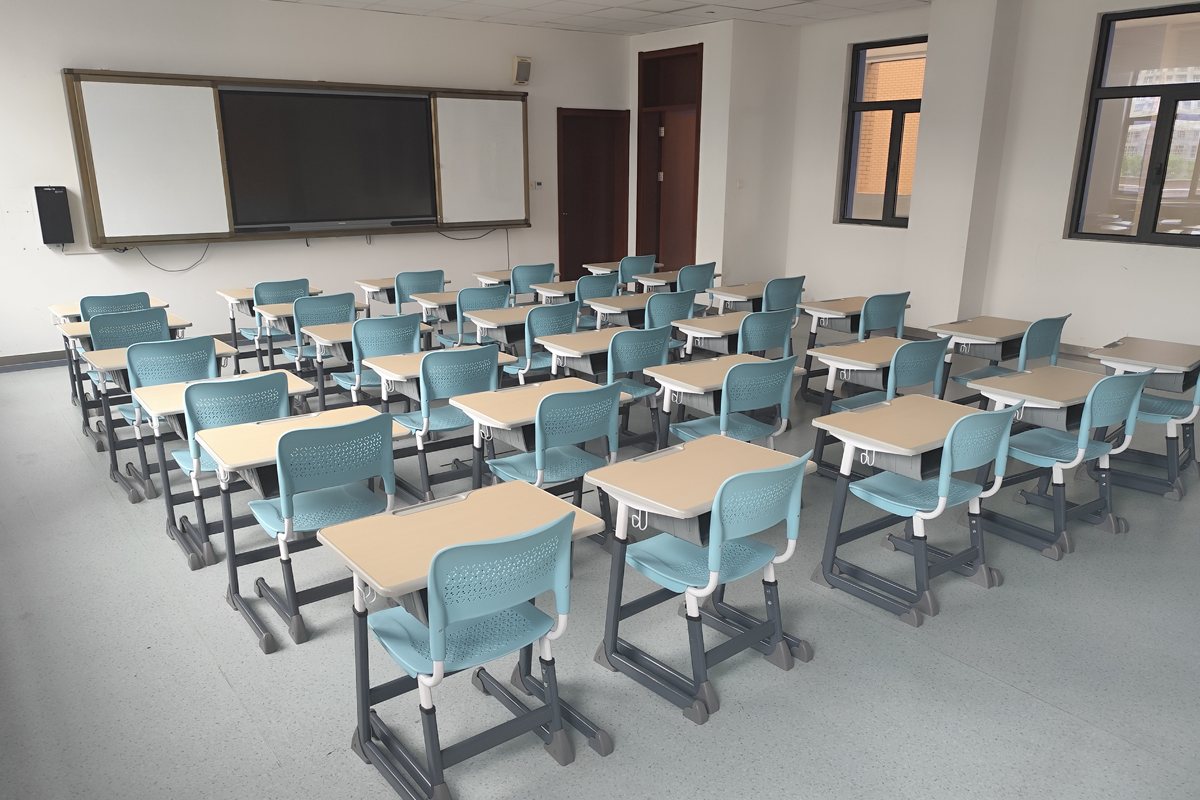1. Ergonomics: Building Comfort for Concentration
The Science: Poorly designed classroom seating can lead to physical discomfort, distracting students from lessons. Ergonomically supportive chairs promote better posture, reduce fatigue, and enhance focus by aligning with the body’s natural movements.
Design Solutions:
- Adjustability: Chairs with height-adjustable seats and lumbar supports accommodate growing students and varying body types.
- Dynamic Movement: Flexible seats (e.g., wobble stools, rocker bases) allow subtle movement, channeling restless energy into productive focus.
- Weight Distribution: Contoured seats with cushioned, breathable materials reduce pressure points during long periods of sitting.
Impact on Learning: Studies show comfortable students participate more actively and retain information better. Ergonomics also reduces absenteeism linked to posture-related aches.
2. Layouts That Foster Collaboration or Independence
The Science: Classroom arrangements signal behavioral expectations. Rows emphasize individual tasks, while clusters or circles encourage interaction.
Design Solutions:
- Modular Furniture: Lightweight, mobile student desks and chairs let teachers reconfigure layouts quickly—from lecture-style rows to group pods.
- Asymmetrical Options: Kidney-shaped or trapezoidal tables create intimate group spaces without isolating students.
- Zoned Classrooms: Combine seating types (e.g., standing desks, floor cushions) to designate areas for quiet study, team projects, or discussions.
Impact on Learning: Flexible layouts support differentiated instruction, catering to introverts, extroverts, and varied learning styles.
3. Color and Aesthetics: Influencing Mood and Motivation
The Science: Color psychology suggests hues like blue and green promote calmness, while yellows and oranges stimulate creativity. Neutral tones reduce overstimulation.
Design Solutions:
- Accent Colors: Use vibrant chair upholstery or table edges to energize spaces without overwhelming.
- Natural Elements: Wood finishes or nature-inspired textures create warm, welcoming environments linked to reduced stress.
- Student-Created Displays: Pair neutral furniture with colorful, rotating student artwork to foster ownership and inspiration.
Impact on Learning: Calm, visually balanced classrooms improve emotional regulation, while strategic pops of color spark curiosity.
4. Inclusivity: Designing for Diverse Needs
The Science: Universal design ensures seating accommodates neurodiverse students, those with physical disabilities, and different sensory preferences.
Design Solutions:
- Sensory-Friendly Options: Offer choices like weighted seat cushions for anxiety or noise-reducing chairs for sensory sensitivity.
- Accessible Layouts: Wider aisles, ADA-compliant desks, and adjustable-height tables ensure mobility aids fit comfortably.
- Choice-Based Learning: Provide alternative seating (bean bags, standing desks) so students can self-select what works best.
Impact on Learning: Inclusive classrooms foster belonging, reduce stigma, and empower students to advocate for their needs.
5. Durability and Long-Term Adaptability
The Science: Schools need cost-effective solutions that withstand daily wear while adapting to evolving pedagogical trends.
Design Solutions:
- Commercial-Grade Materials: Powder-coated metal frames, scratch-resistant laminate tops, and replaceable parts extend furniture lifespan.
- Future-Proof Designs: Opt for neutral-colored, modular pieces that blend with changing tech (e.g., built-in charging ports).
- Student Involvement: Teach maintenance routines (e.g., wiping surfaces) to instill responsibility and care for shared resources.
Impact on Learning: Durable, adaptable furniture minimizes disruptions and budget strain, letting schools focus on education.
Building Classrooms That Inspire
Effective seat design merges form and function, recognizing that every choice—from chair height to classroom layout—shapes the learning experience. By prioritizing ergonomics, flexibility, inclusivity, and sustainability, schools can create spaces where students feel physically at ease, mentally engaged, and emotionally secure.
Post time: Mar-20-2025








